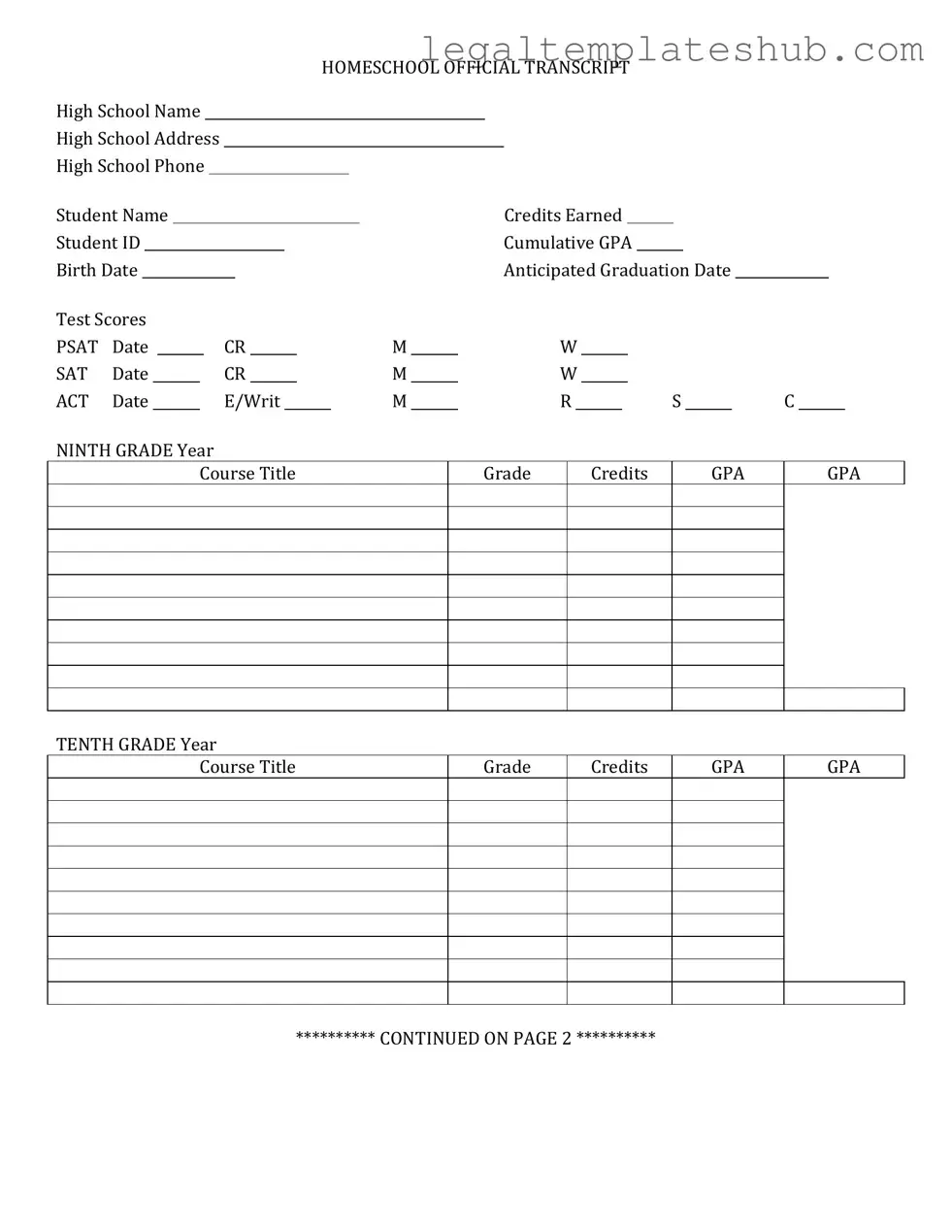Blank High School Transcript PDF Form
The High School Transcript form is a crucial document that outlines a student's academic achievements during their high school years. It typically includes courses taken, grades received, and credits earned, serving as a key component in college admissions and job applications. To ensure you have the necessary documentation, fill out the form by clicking the button below.
Access Editor
